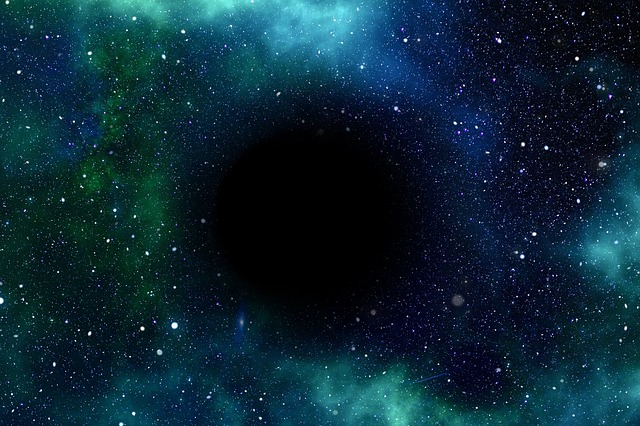A black hole was recently found for the first time just 1,000 light-years from Earth, which makes it the black hole that is closest in proximity to human civilization.
Located within a rare triple system known as HR 6819, this black hole shares an orbit with two other stars. Another reason that the new black hole fascinates scientists is because the system can now give researchers an opportunity to learn more about gravitational waves. The reason that it has taken so long for astronomers to notice this new black hole is because of how difficult it is to find any black hole in the first place.
One of the key traits that both astound and profound scientists is the capability of a black hole to absorb all light that passes through it. A total lack of visible light means that a black hole is difficult to locate, even with advanced detection equipment. The way that researchers confirm the existence of a black hole is by analysing the data from stellar movements surrounding the elusive gravity well. This new black hole was found by astronomers working for the European Southern Observatory (ESO). They utilized the massive MPG/ESO 2.2 meter telescope installed in the La Silla Observatory out of Chile. This powerful tool enabled them to track detailed movements of stars which made it possible to identify details about the black hole.
Dietrich Baade works as ESO’s Emeritus Astronomer, and he was able to enlighten Digital Trends about some of the tactics researchers use to find a black hole. He explained that it was possible to pinpoint the black hole’s location by observing the movements of its surrounding stars. High-quality recording equipment makes it simple to see miniscule movement from stars that are visible to the human eye.
Using the Doppler shift, a form of measuring distance by counting the frequency of distortion waves, it was not that difficult to find everything they needed to know about the black hole. Any time that a star changes its course or seems altered by gravity isn’t arbitrary. It always means that another celestial body is affecting it in some way. Any time that there are signs of a star being altered by a large mass, yet no such mass can be spotted, is a strong sign that a black hole may be the culprit.
It isn’t every day that a black hole is found so close to Earth. These impressive objects are famous for their intense gravitational pull from which not even light photons can escape. While a nearby black hole doesn’t threaten life on Earth, they can have heavy implications regarding the way we treat objects that are in the same area. Just as the moon pulls the tide up and down with its gravitational influence over the ocean, a black hole can easily change the orbit of nearby stars.
For most people, the movement of the stars affects nothing more than their horoscope, but scientists and astronomers take heed of exactly how the cosmos wheels across the sky. Knowing that a black hole can be affecting the path that the stars take will help astronomers more accurately glean information from their work.
This new discovery is also exciting for the fact that the black hole is part of a triple system– a system that is composed of two stars and one black hole that all share the same center of mass in their orbit. This specific triple system type is known as a hierarchical system thanks to one of the three objects being farther away than the other two. It’s just one of the myriad ways that cosmic forces merge to form unique combinations.
A triple system such as this can have helpful implications for researchers in the future. Scientists may be able to learn more about gravitational waves by studying this triple system. These kind of waves come about whenever two black holes orbit each other; and, while the newly discovered system does not have gravitational waves, it can be used as a model to aid in further study.
An extreme amount of energy is ejected from the site of two binary black holes coming into contact with each other. It is such a cataclysmic event that space itself becomes distorted. If this happened, then projects such as LIGO (Laser Interferometer Gravitational-Wave Observatory) have the ability to detect its passing.
Why exactly two binary black hole bodies would come together is a matter that is still up for debate in the scientific community. There is a possibility that a third star could influence the a black hole to merge with another one.
Observing the HR 6819 triple system will answer questions that have been bugging scientists for years about what causes a binary black hole to combine with its counterpart. There is finally a roadmap that researchers can study for situations that would lead to a massive gravitational wave.
While the system itself is not new for scientists, as they have been casually observing it for around two decades, the addition of a black hole to the mix makes it vastly more interesting.
Stan Stefl, the team’s leader, passed away in 2014 due to a tragic car accident. Although he was unable to see his team contribute amazing information about the black hole to the scientific community, his teammates expressed that they were happy to be able to conclude their research.






